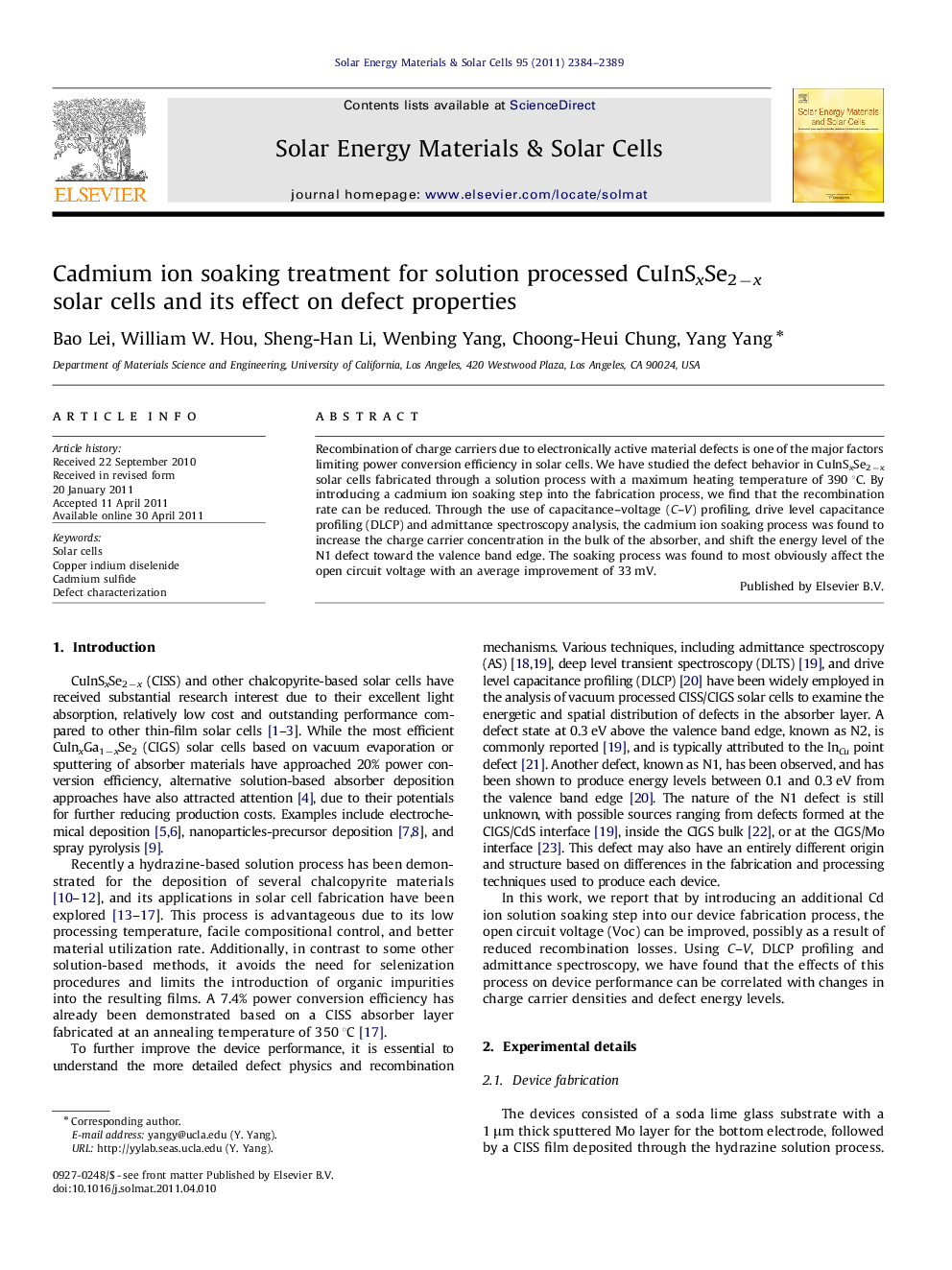| Article ID | Journal | Published Year | Pages | File Type |
|---|---|---|---|---|
| 78794 | Solar Energy Materials and Solar Cells | 2011 | 6 Pages |
Recombination of charge carriers due to electronically active material defects is one of the major factors limiting power conversion efficiency in solar cells. We have studied the defect behavior in CuInSxSe2−x solar cells fabricated through a solution process with a maximum heating temperature of 390 °C. By introducing a cadmium ion soaking step into the fabrication process, we find that the recombination rate can be reduced. Through the use of capacitance–voltage (C–V) profiling, drive level capacitance profiling (DLCP) and admittance spectroscopy analysis, the cadmium ion soaking process was found to increase the charge carrier concentration in the bulk of the absorber, and shift the energy level of the N1 defect toward the valence band edge. The soaking process was found to most obviously affect the open circuit voltage with an average improvement of 33 mV.
Graphical abstractFigure optionsDownload full-size imageDownload as PowerPoint slideHighlights► Cd ion soaking improves Voc and efficiency of solution processed CISS solar cells. ► Soaking treatment increases carrier concentration and reduces recombination. ► Defect properties characterized using AS, C-V, and DLCP.
